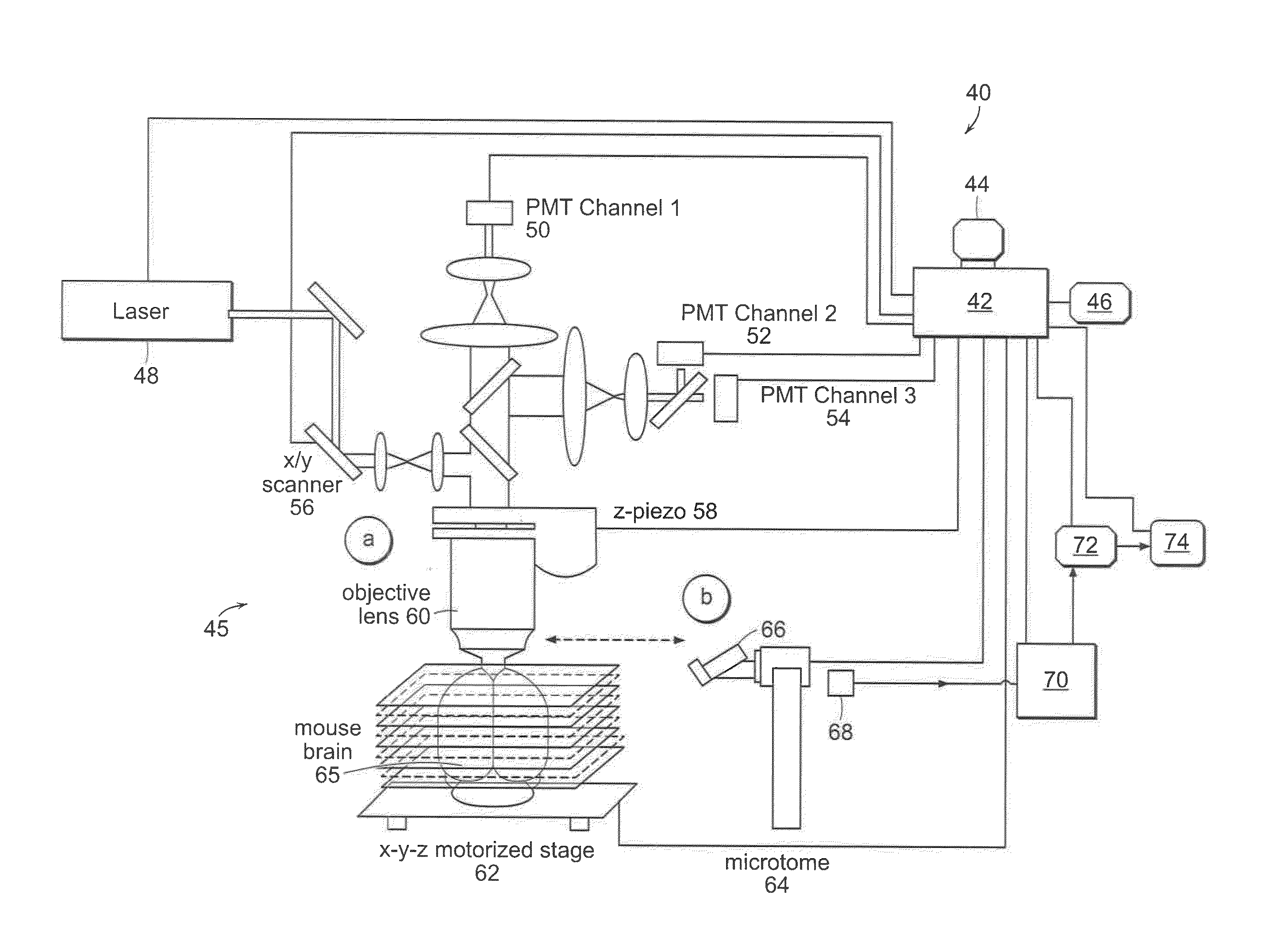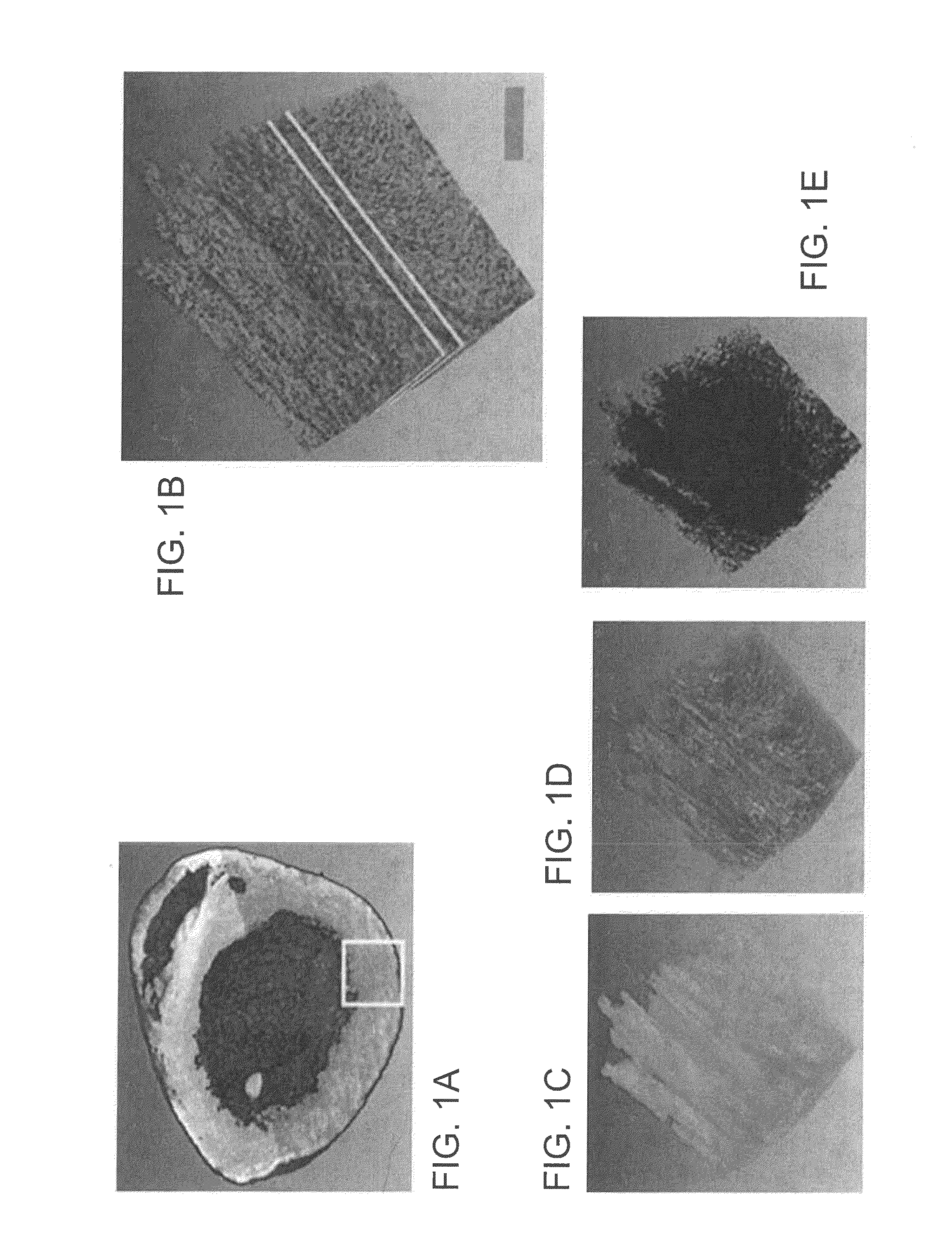Systems and methods for imaging and processing tissue
a tissue imaging and tissue technology, applied in the field of biomedical science for imaging and tissue processing methods, can solve the problems of inability to directly apply organ level imaging, inability to accurately prohibitively slow standard tpm system image acquisition speed for imaging macroscopic 3d tissues, etc., to achieve rapid image samples with arbitrary thickness, high reliability, and accurate digital registration
- Summary
- Abstract
- Description
- Claims
- Application Information
AI Technical Summary
Benefits of technology
Problems solved by technology
Method used
Image
Examples
Embodiment Construction
[0032]FIG. 1A-1G illustrates image data that can be acquired and processed in accordance with the invention. An entire mouse heart was imaged with sub micron resolution and multispectral detection as shown in FIG. 1A. This system visualizes details at the subcellular level throughout the entire heart, revealing features of the nuclei, vessel architecture, mesoscale architecture such as cleavage planes in the heart, and the macroscopic morphology of the heart chambers. This entire 3D data can span almost five orders of magnitude. FIG. 1B shows autofluorescence of heart tissue with labeled nuclei and vasculature wherein the scale bar is 100 μm. FIG. 1C shows cleavage planes of laminar sheets of sectional myocardium. FIG. 1D shows morphology of the 3D microvasculature. FIG. 1E shows nuclei from the myocytes, fibroblasts and endothelial cells lining the vasculature. FIG. 1F shows the section outlined in FIG. 1B where the arrow indicates space between successive cleavage planes. FIG. 1G ...
PUM
 Login to View More
Login to View More Abstract
Description
Claims
Application Information
 Login to View More
Login to View More - R&D
- Intellectual Property
- Life Sciences
- Materials
- Tech Scout
- Unparalleled Data Quality
- Higher Quality Content
- 60% Fewer Hallucinations
Browse by: Latest US Patents, China's latest patents, Technical Efficacy Thesaurus, Application Domain, Technology Topic, Popular Technical Reports.
© 2025 PatSnap. All rights reserved.Legal|Privacy policy|Modern Slavery Act Transparency Statement|Sitemap|About US| Contact US: help@patsnap.com



